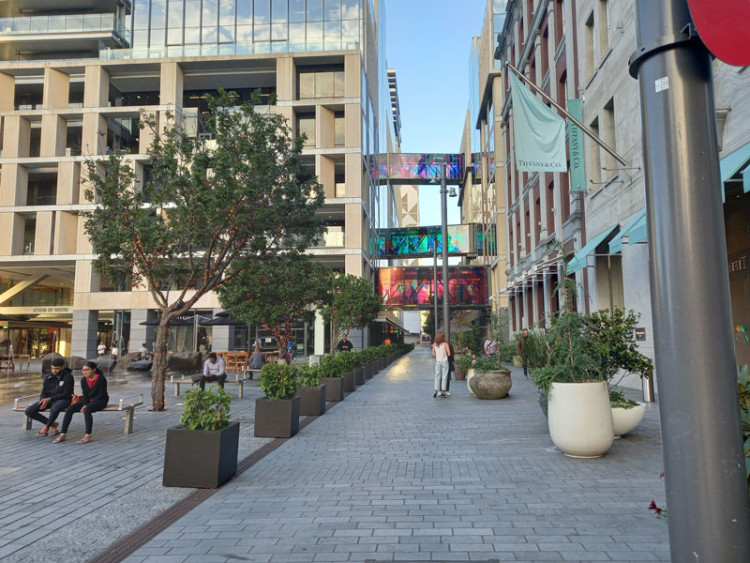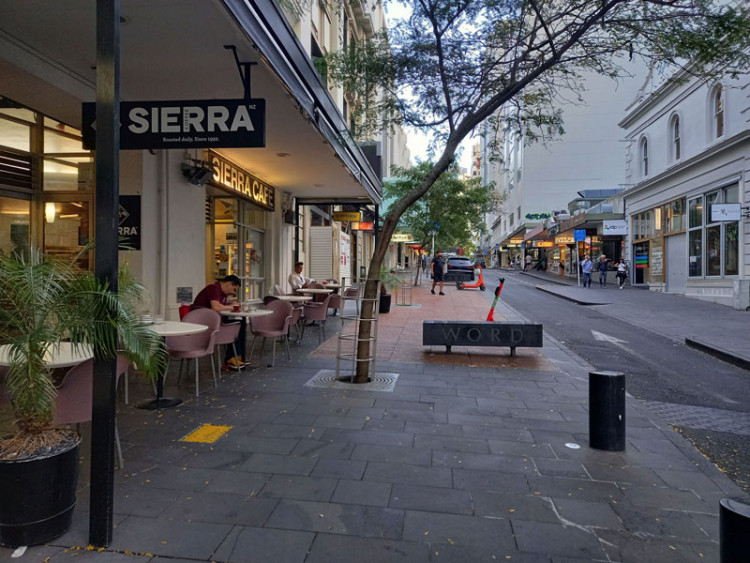Features should be consistent and easy to understand for all pedestrians to know intuitively how to navigate a route or space.
Legibility means the alignment and arrangement of paths and spaces are consistent and logically arranged with readily identifiable features. It means space allocation is coherent (for example, street furniture is aligned in a zone along the street) and consistent surface materials and landscape palettes are used.
Buildings and other features can also aid navigation. It is important that legibility makes walking routes obvious for all pedestrians. For example, the layout of shared space streets such that walking is allowable everywhere but changes in the surface texture, placement of street furniture, planting and bollards guides navigation along the street.

Good example of walking legibility, Auckland (Jeanette Ward)

Poor example of walking legibility, Auckland (Jeanette Ward)
Consistent wayfinding signage is important for locations where users may not be familiar (for example, town centres) ensuring the content and messaging is appropriate at distinct points of arrival.

Wayfinding signage, Christchurch (Glen Koorey)